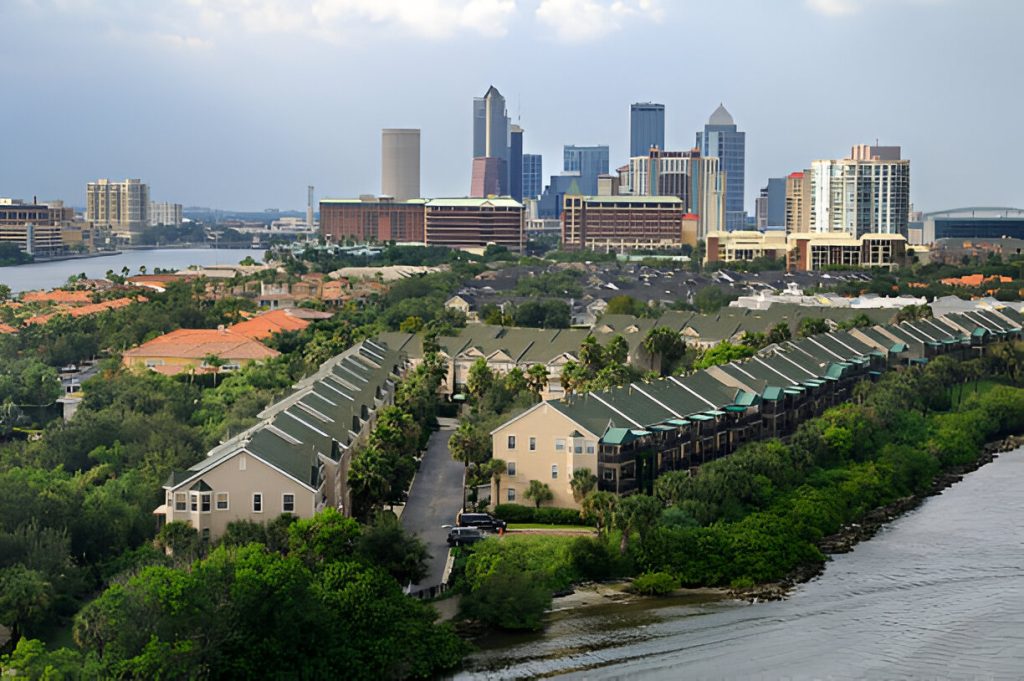Famous for its lovely beaches and pleasant climate, the Tampa Bay region has recently experienced extreme flooding. This emergency problem has affected people’s lives at home, in business, and their daily lives. Flooding in Tampa Bay has been a long time problem, but with the intensifying effects of climate change, storms have become both more frequent and intense, forcing the community to deal with their aftermath.
This article will explain how Tampa Bay is handling the recent flooding and the procedures being adopted to minimize risks in the future.
Immediate Emergency Responses
To respond to the latest incidents of flooding, Tampa Bay has enacted several procedures to protect both its population and its infrastructure. Here’s what is being done in the immediate efforts:
Rescue Operations
A quick rise of floodwaters could trap people in their houses or cars. Residents who were left stranded were rescued by the local fire department, police, and even the Coast Guard. Some localities experienced a situation where boats became the sole means of accessing people trapped by floodwaters. First responders have been committing themselves around the clock to ensure that everybody is safe and accounted for.
Clearing Roads
Tampa Bay’s flooding has impaired many roads. City workers are focused on removing debris, draining water, and reestablishing safe travel on critical highways. In some places, this has involved removing water from streets in low-lying areas and restoring road surface damage.
Traffic disruptions have been a prominent issue, with road closures and detours causing travel issues citywide. Nonetheless, endeavors are being made to get traffic moving again as fast as possible.
Relocation and Reconstruction
When the flooding started, authorities from the municipality moved quickly to relocate those in the highest-risk areas. Due to their proximity to the coast or rivers, many neighborhoods were in high danger of flooding, so residents were advised to relocate to safer locations. Evacuation centers and shelters set up across the city provided temporary housing for people in need.
Residential property owners have begun reconstructing their units by hiring reliable contractors to ensure residents resume their normal lifestyles as quickly as possible. That includes contracting expert construction companies and roofing services to fast-track the process. One such contractor is the Roofing Company of Tampa Bay and surrounding cities. This and other professional contractors are providing quality reconstruction, roof installations, and reliable repairs. This will ensure the damaged homes are well renovated and the surroundings are free of debris upon completion.
Long-Term Recovery and Management
While immediate action in response to the flooding has been fruitful, the city of Tampa Bay is now considering long-term solutions to either prevent or minimize damage from future flooding events.
Upgrading Drainage Systems
One of the main long-term projects involves enhancing Tampa’s stormwater drainage systems. Designed years ago, these frameworks are unsuited for dealing effectively with today’s weather events. City officials are developing plans to improve the infrastructure, including building larger drains and additional retention dams to store excess water. They will also ensure that new developments include efficient drainage systems. These improvements will take time and considerable funding.
Constructing Coastal Barriers
Another strategy being discussed is the building of better-protected coastal systems. This may involve sea walls, levees, and natural barriers like mangroves or artificial reefs that can lower the influence of storm surges. In addition to protecting homes and businesses from rising water levels, these defenses can slow the rate of erosion along the coastline.
The task at hand is to harmonize these construction projects with environmental issues. Planning any construction near important ecosystems is essential to avoid causing unanticipated harm.
Amending Construction Regulations
Many authorities are now focusing on improving building codes to better adapt to future floods. This includes matters such as the provision that structural development be established on higher elevations, the use of flood-resistant materials, and the elevation of home construction.
Zoning may also be evolved to reduce the extent of development in areas most sensitive to flooding. Significantly, the development of the city through new structures also controls how it is developed so as to avoid future disasters.
Uptake of Property Insurance
With the recent flood disasters, it has become even more important for Tampa Bay residents to have enough flood insurance coverage. Currently, the NFIP provides flood insurance to owners and residents, but it does not cover every person in the country. Various stakeholders in cities are trying to educate communities about acquiring natural calamity insurance, especially those within flood-prone regions.





